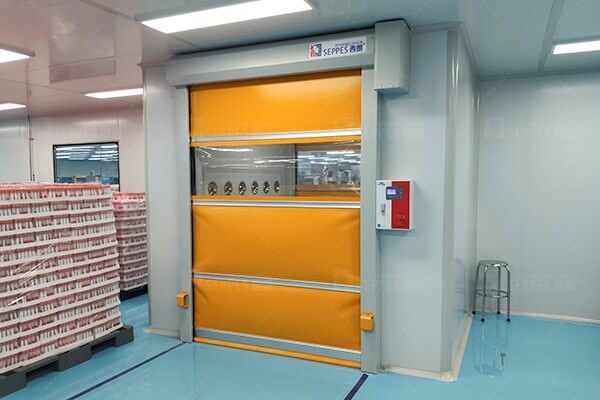As New Zealand’s economy continues to grow, the need for efficient and intelligent equipment is becoming more pressing, particularly in areas such as logistics, manufacturing, food processing, and the pharmaceutical industry. High-Speed Factory Doors, as an important part of modern industrial facilities, are widely used in factory warehouses, production halls, manufacturing plants’ clean rooms, and many other places. They not only improve operational efficiency but also can effectively isolate the external environment to ensure production safety and product quality. In this article, we will discuss the definition, application scenarios, features, and benefits of high-speed factory doors, and provide a relevant buying guide.
What is a high speed factory door?
High-speed factory doors are industrial doors designed for high-frequency entry and exit, with opening and closing speeds typically ranging from 0.8 to 1.5 meters per second. They are mainly used where fast, frequent opening and closing are required to improve efficiency and reduce energy consumption. High-speed factory doors are usually made of high-strength materials with good durability and impact resistance.
Types of high speed factory doors and their application scenarios
The following types of high-speed factory doors are mainly used in industrial premises in New Zealand:
High Speed Roll Up Doors
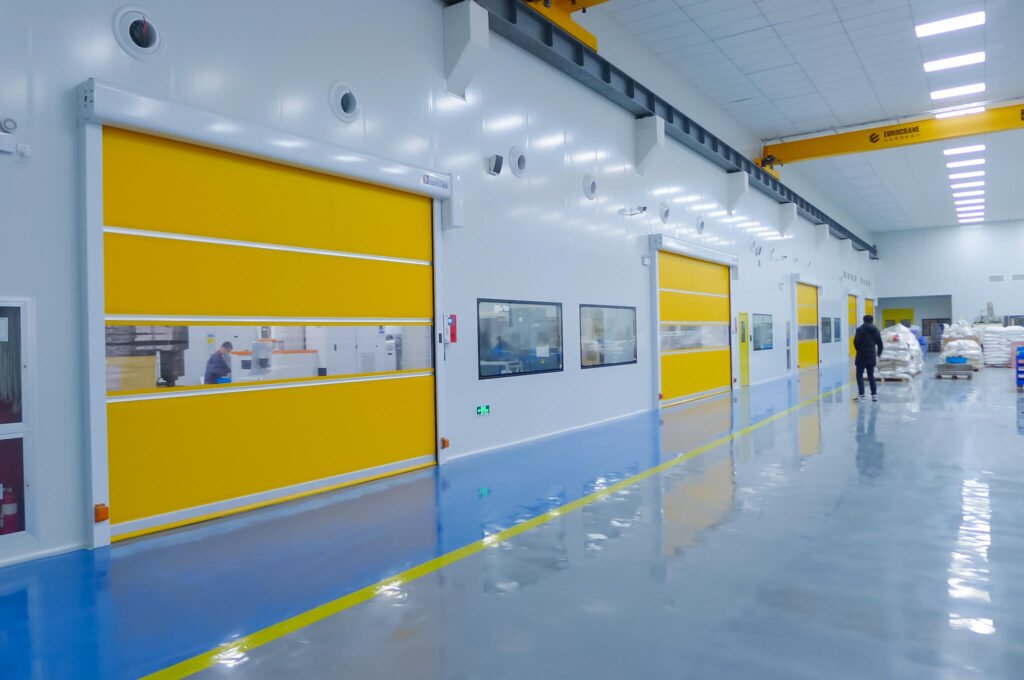
Application Scenario: High-Speed Roll Up Doors are widely used in logistics warehouses and production plants.
Features and advantages:
Fast opening and closing: Reduce the waiting time for goods in and out and improve overall efficiency.
Durability: Made of high-strength materials with good wind resistance and durability.
Technical parameters: opening and closing speed of 1.5 meters per second, load capacity up to 5000 kg.
High Speed Zipper Doors
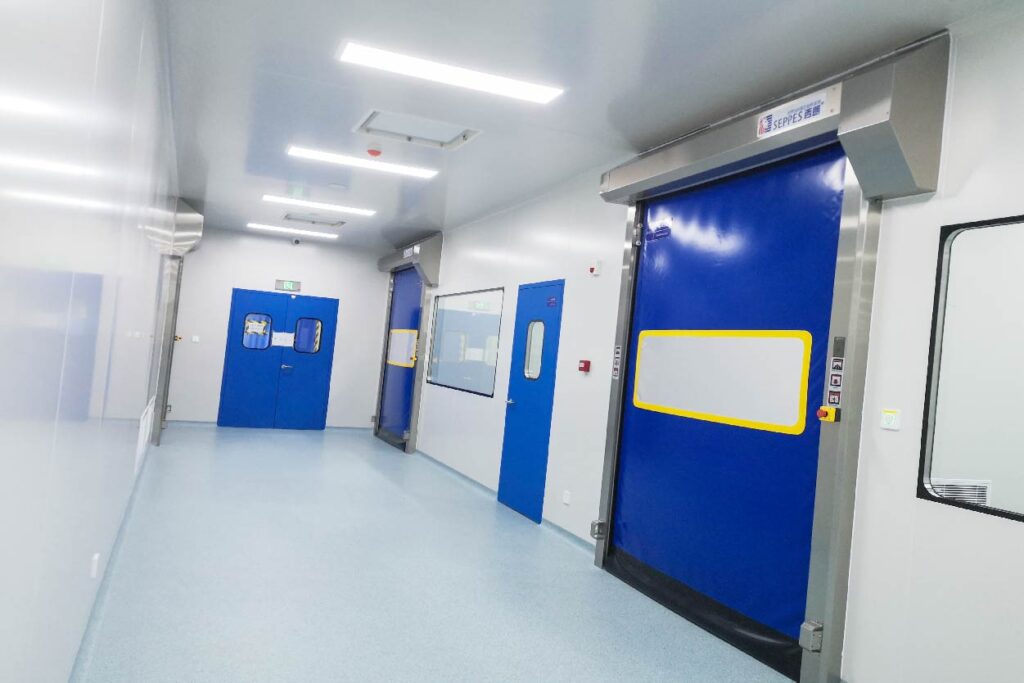
Application Scenario: High Speed Zipper Doors are suitable for clean rooms and areas with high requirements for temperature control, such as pharmaceutical factories.
Features & Benefits:
Self-repairing function: able to automatically reset the door curtain in the event of an impact, reducing maintenance costs.
High sealing: effectively isolates external contaminants and keeps the internal environment clean.
Technical parameters: opening and closing speeds up to 2.0 metres per second, adapted to frequent use.
High Speed Stacking Doors
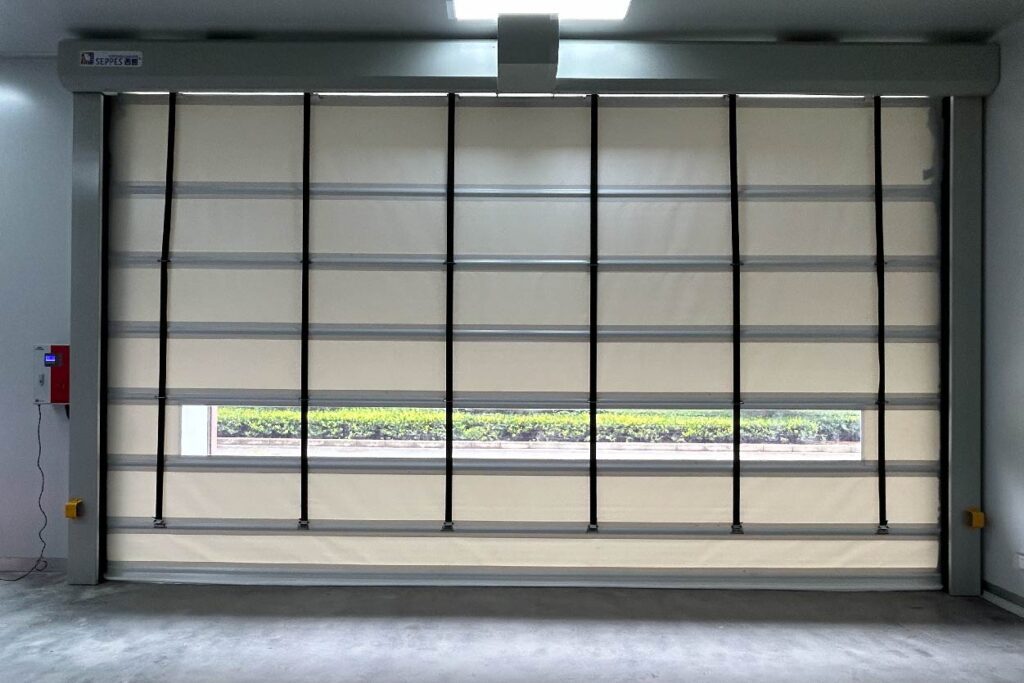
Application Scenario: High Speed Stacking Doors are widely used in automated warehouses with high frequency opening and closing.
Features and Benefits:
Space Saving: Compact design, able to effectively utilize limited space.
High efficiency: Handle a large amount of goods quickly and improve operational efficiency.
Technical Parameters: Load capacity of 3000kg, opening and closing frequency up to hundreds of times/day.
High Speed Spiral Doors

Application Scenario: High Speed Spiral Doors are suitable for outdoor environments with extreme weather conditions.
Features & Benefits:
High wind resistance: Designed to withstand strong winds and ensure door stability.
Aesthetics and Practicality: Suitable for places where appearance is important.
Technical parameters: wind pressure up to 800 Pa, with good sealing performance.
Insulated High Speed Doors
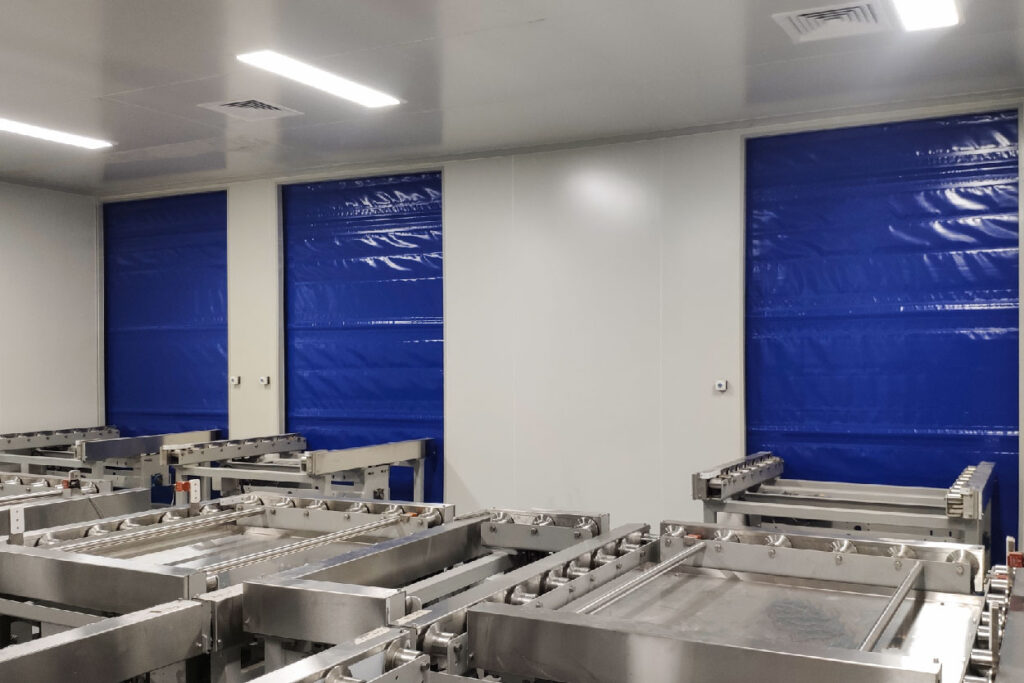
Application Scenario: Insulated High Speed Doors cold storage and temperature-controlled warehouses and other environments with strict requirements on temperature.
Features and advantages:
Good thermal insulation: U-value less than 1.0 W/m²K, which can effectively reduce energy consumption.
Temperature control effect: able to maintain a constant internal temperature and protect the quality of stored goods.
Technical parameters: suitable for locations with a temperature range of **-30°C to +50°C**.
| Door Type | Core Functions | Applicable Scene | Material | Switching speed | Additional Functions | Wind pressure/temperature range |
| High Speed Roll Up Doors | High-frequency logistics channel | Logistics warehouse, production workshop | Aluminum alloy + tear-resistant PVC | 1.5 m/s | 5000kg load bearing, infrared anti-collision | Wind pressure ≥ 600 Pa |
| High Speed Zipper Doors | Clean room isolation | Pharmaceutical factory, electronic manufacturing | Self-repairing PVC + steel rails | 2.0 m/s | Airtightness ≥99%, automatic reset | Temperature: -10°C~+40°C |
| High Speed Stacking Doors | Space optimization | Automated three-dimensional warehouse | High strength polyester fiber + steel frame | 1.2 m/s | Day switch ≥ 500 times, low noise | Wind Pressure≥400 Pa |
| High Speed Spiral Doors | Extreme Climate Adaptation | Outdoor loading and unloading areas, ports | Galvanized steel spiral track + double curtain fabrics | 0.8 m/s | Waterproof IP65, UV resistant | Wind pressure ≥800 Pa |
| Insulated High Speed Doors | Temperature controlled environmental isolation | Cold storage, food processing plant | Polyurethane sandwich + stainless steel frame | 1.0 m/s | U-value ≤1.0 W/m²K, low temperature warning | Temperature: -30°C~+50°C |
Why choose high-speed factory door?
The main reasons for choosing high-speed factory doors include the following:
Enhance operational efficiency: Rapid opening and closing significantly reduces the waiting time for goods, especially during peak hours, and can significantly improve overall work efficiency.
Energy saving and environmental protection: the good sealing of high-speed doors effectively reduces the loss of hot and cold air, reducing energy consumption and thus saving operating costs.
Enhanced safety: High-speed doors are equipped with multiple safety devices such as infrared sensors and bottom airbags, which can ensure safety during operation and reduce the risk of accidental injury.
Durability and Stability: High-speed doors are usually made of high-strength materials. Adapting to a variety of harsh environments, ensuring long-term stable operation, and reducing maintenance costs.
Specific applications for high-speed factory doors in New Zealand
In New Zealand’s logistics centres, high-speed roller shutter doors are able to increase the speed of goods in and out, ensuring the efficient operation of the logistics chain. Warehouses with high-speed roller shutter doors can usually realise a seamless flow of goods in and out, improving overall efficiency.
In the food industry, high-speed zip doors can effectively isolate external contamination, maintain a clean environment, comply with food safety standards, and protect the quality and safety of products.
Electronics Manufacturing
In electronics manufacturing, transparent high speed doors allow for visual monitoring to ensure smooth production processes while preventing the entry of dust and safeguarding clean products.
Insulated high-speed doors play an important role in cold storage. Effectively maintaining internal temperatures, reducing energy consumption and ensuring the quality of stored food and perishable goods.
In cleanroom environments, the sealing performance of high-speed doors can effectively ensure clean air, suitable for pharmaceutical and high-tech product production.
Buyer’s Guide to High Speed Doors
When choosing a high-speed door, you need to focus on the following points:
Use of the scene: clarify the specific scene you need, such as logistics warehouse, food processing or electronic manufacturing, in order to choose the right type of door.
Opening and closing speed: choose the right opening and closing speed according to the actual working needs to meet the frequency of operation.
Safety: Ensure that the door body you choose has the necessary safety features to protect the operator.
Brand and after-sales service: choose well-known brands, such as SEPPES, Hörmann, etc., to ensure product quality and after-sales support.
Product technical parameters and recommendations
When choosing a high-speed door, you need to pay attention to the following technical parameters:
Opening and closing speed: usually between 1.0 and 1.8 metres per second.
Wind resistance performance: need to choose the appropriate wind resistance level according to the use of the environment, especially for outdoor use of the door body.
Thermal insulation: In cold storage or constant temperature environments, the U-value of an insulated door should be less than 1.0 W/m²K to ensure good thermal insulation.
Safety performance: Ensure that the door body is equipped with infrared sensors and other safety devices to guarantee safe operation.
Recommended brands: Choose famous brands such as SEPPES, Hörmann and ASSA ABLOY to ensure product quality and service.
Future Outlook
The market for high-speed speed doors will continue to expand as the demand for efficient equipment in the New Zealand market continues to grow. In the future, high-speed doors will become smarter. And integration with IoT technology will become an industry trend, driving companies to achieve more efficient operational management.
Conclusion
Through the above analysis, you can understand the wide application and importance of high-speed doors in different industrial sites in New Zealand. Our high-speed doors enjoy a good reputation in the New Zealand market. And have won the trust of our customers due to their superior performance and reliable quality. We hope this article will help you to better understand high-speed doors and make informed decisions on your future purchases.
FAQ: Frequently Asked Questions about High Speed Factory Doors in New Zealand
Q1: Are high-speed factory gates reliable in extreme weather?
A: Yes. For example, Spiral Doors are designed with galvanized steel tracks and double curtains to withstand the strong winds (800 Pa wind pressure) of New Zealand’s South Island and the high humidity of coastal environments.
Q2: How can I tell if a door’s sealing performance meets cleanroom standards?
A: Check for ISO 14644 certification and test for airtightness (e.g. High Speed Zipper Doors are ≥99% airtight).
Q3: What is the maintenance frequency of High Speed Doors?
A: It is recommended to check track lubrication and sensor sensitivity quarterly, and monthly maintenance is required for high-frequency use (e.g., logistics warehouses).
Q4: Do you support customized size?
A: Yes. For example, SEPPES brand can customize the door body with width ≤ 10m and height ≤ 8m, special size needs to provide architectural drawings.
Q5: How to quantify the energy saving effect?
A: According to the New Zealand Energy Authority, Insulated Doors can reduce refrigeration energy consumption by 40% when used in cold storage.
Q6: Which brands offer fast repairs locally in New Zealand?
A: SEPPES, Hörmann, and other brands have 24-hour service points in Auckland and Christchurch, promising to respond to emergency breakdowns within 4 hours.
More Information about High Speed Doors:
Factors affecting the price of high speed doors and a guide to choosing a quality door

